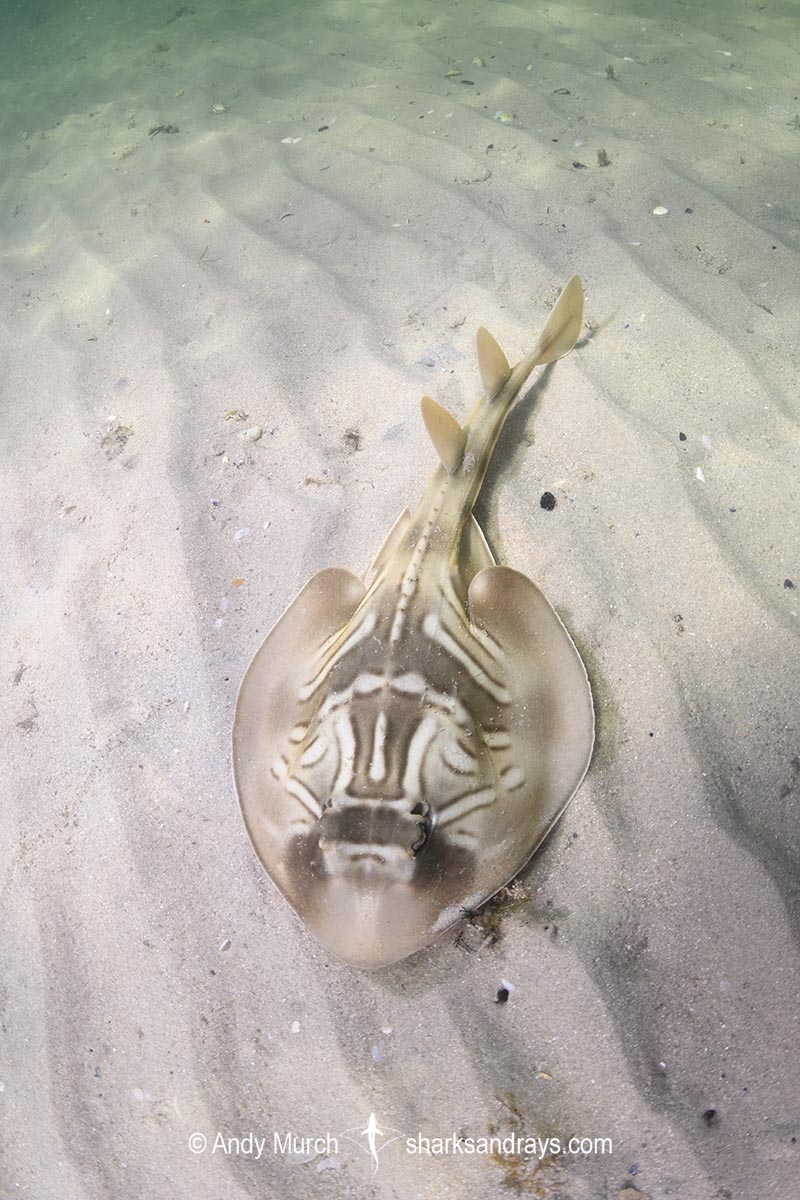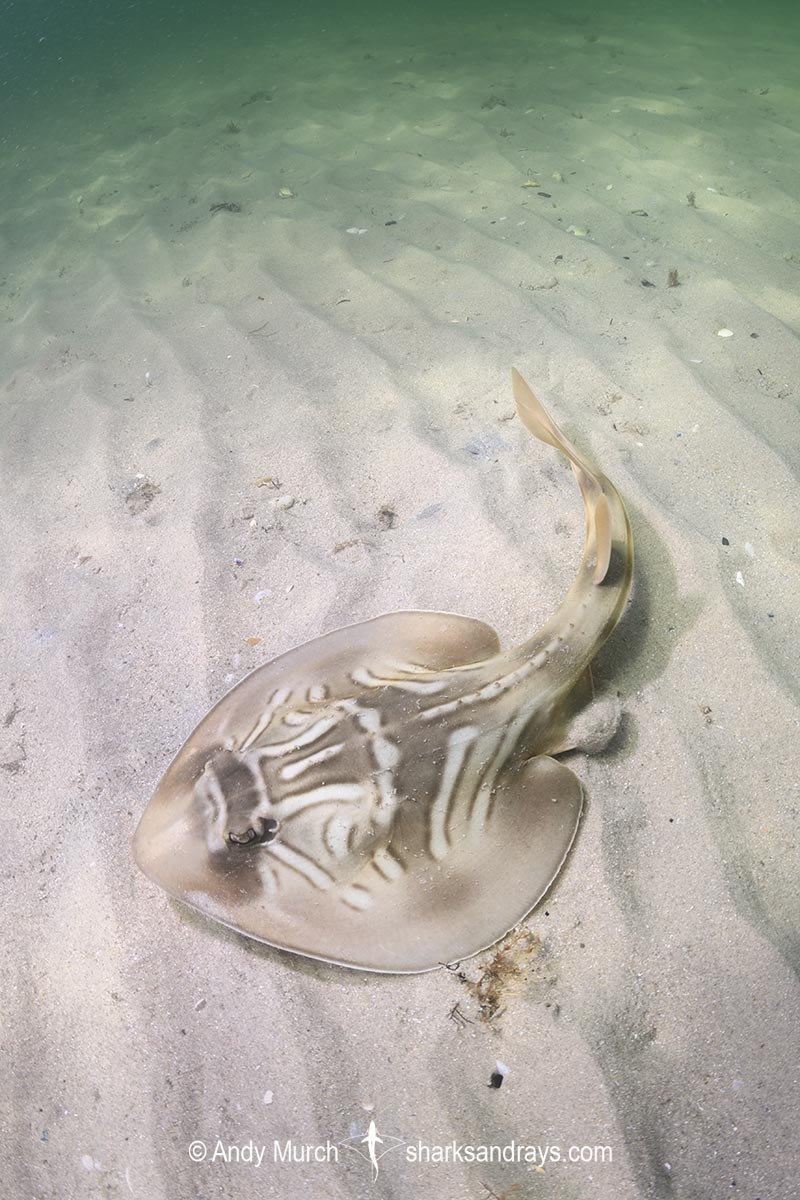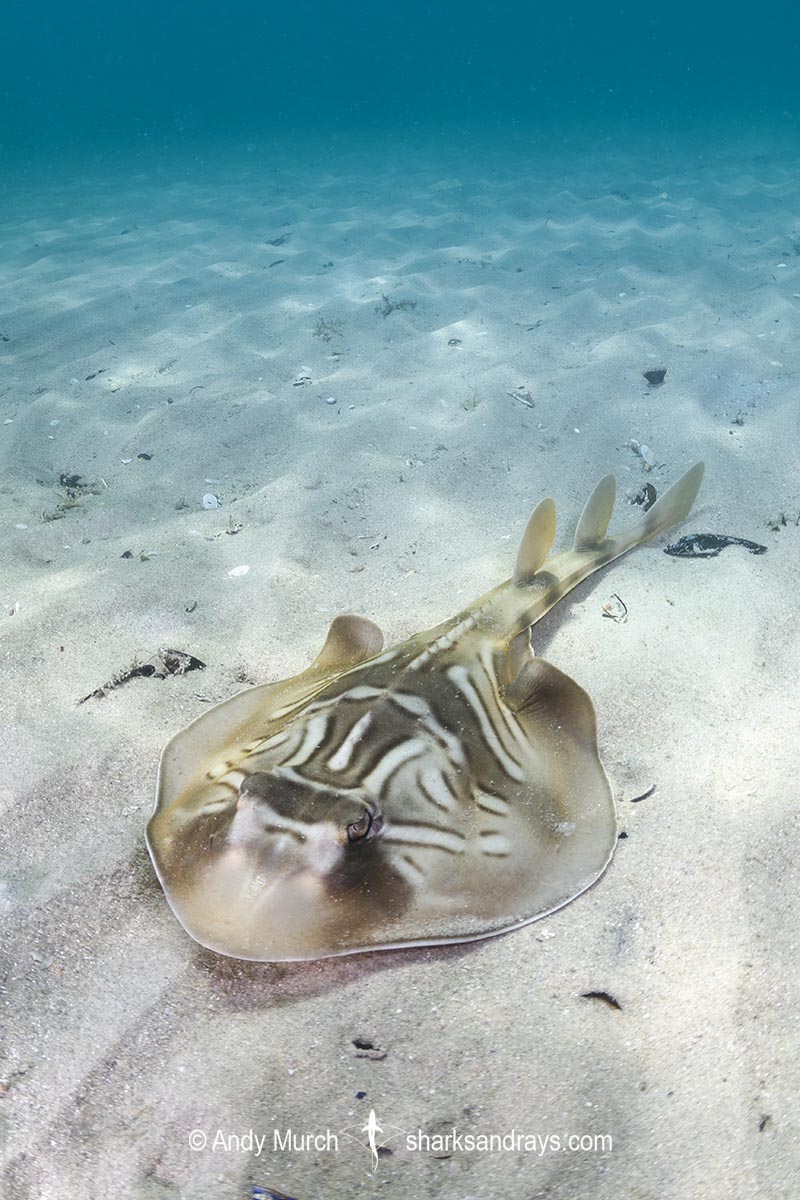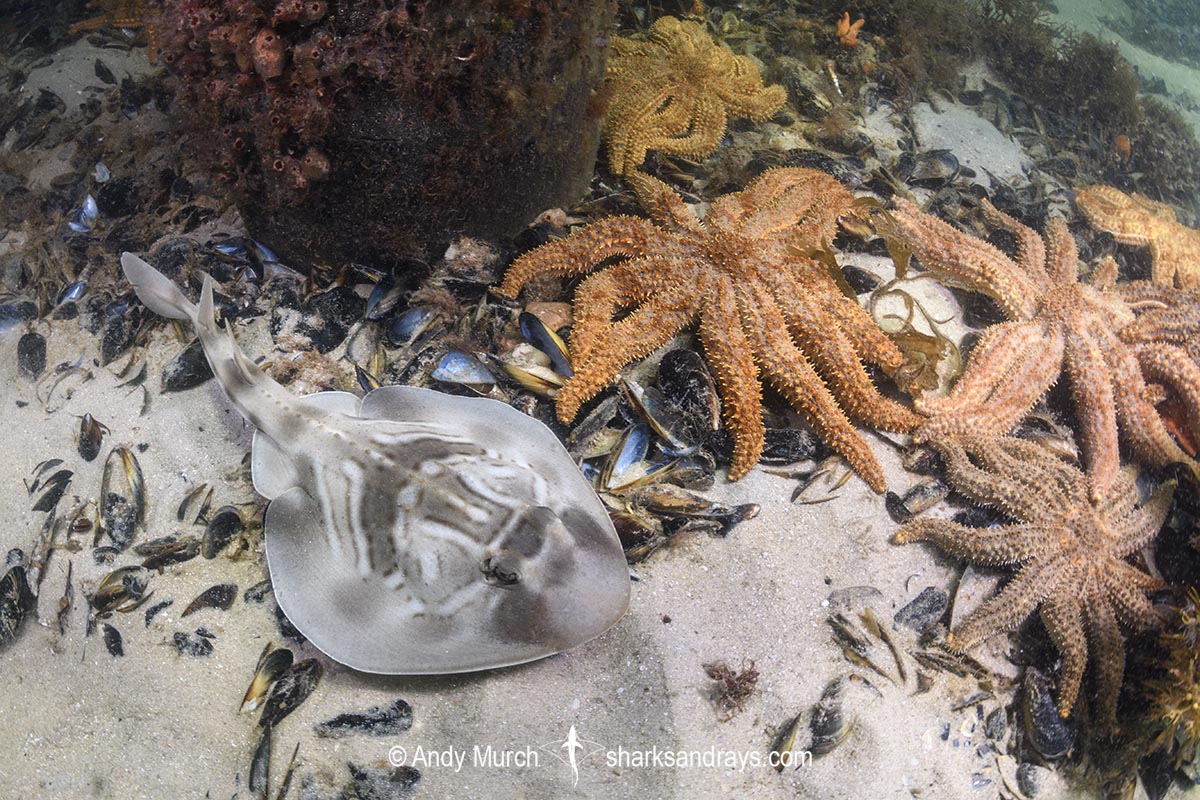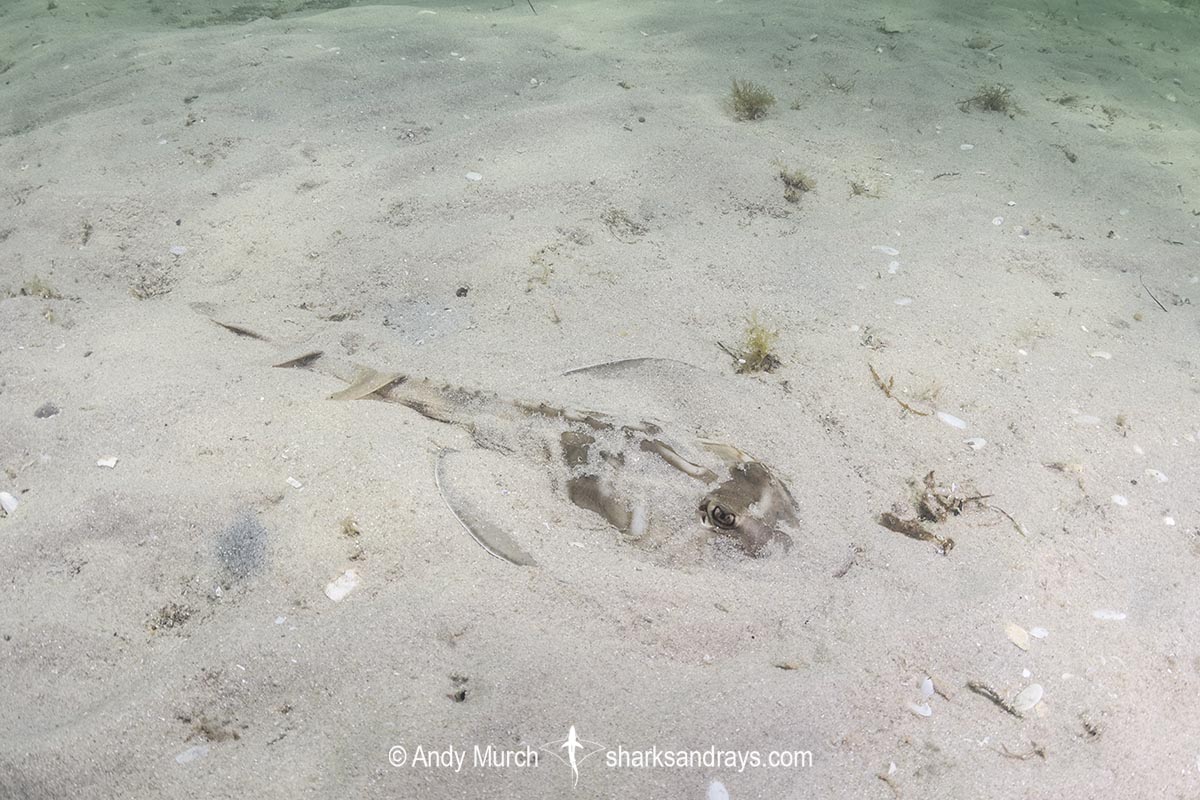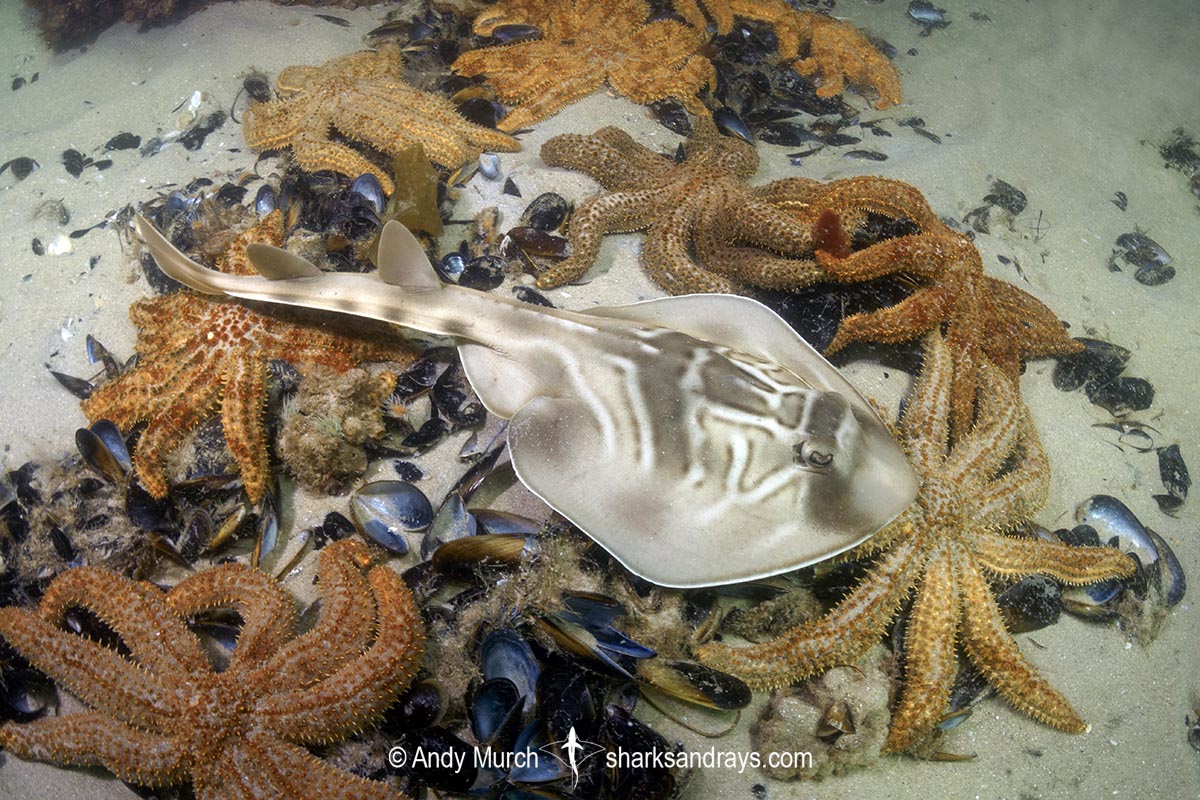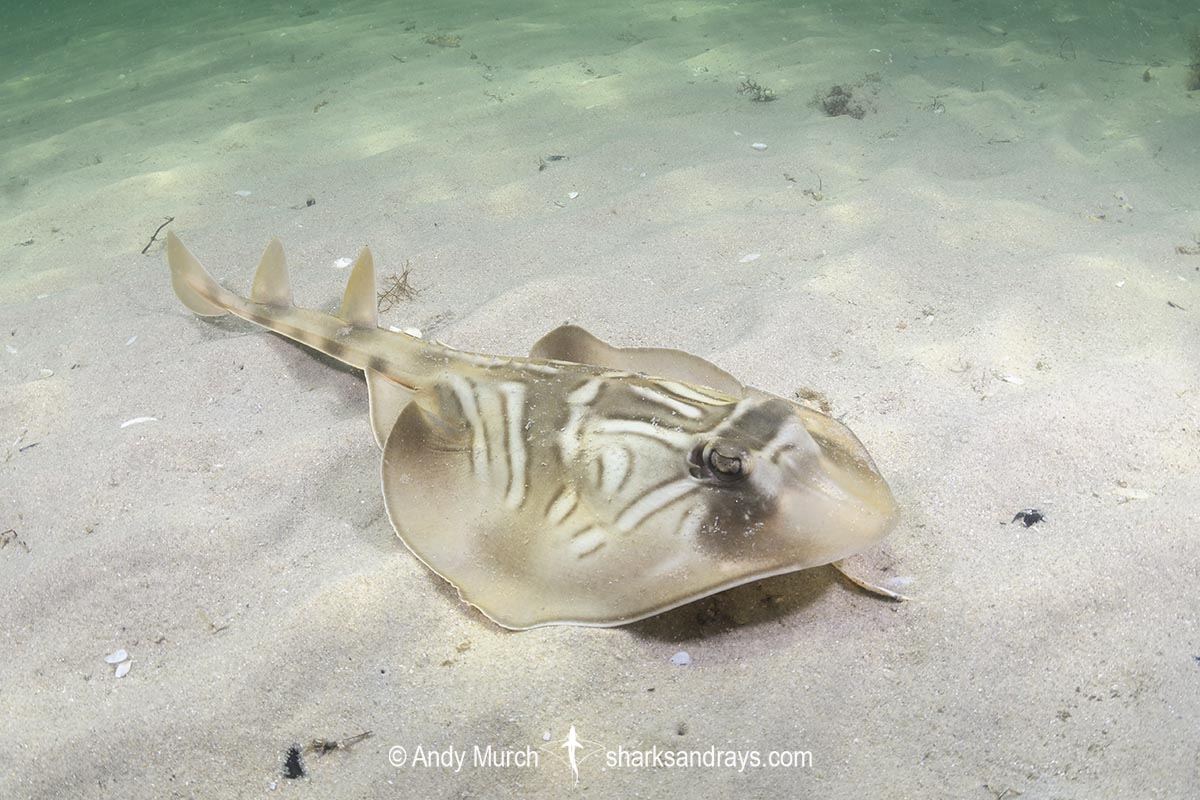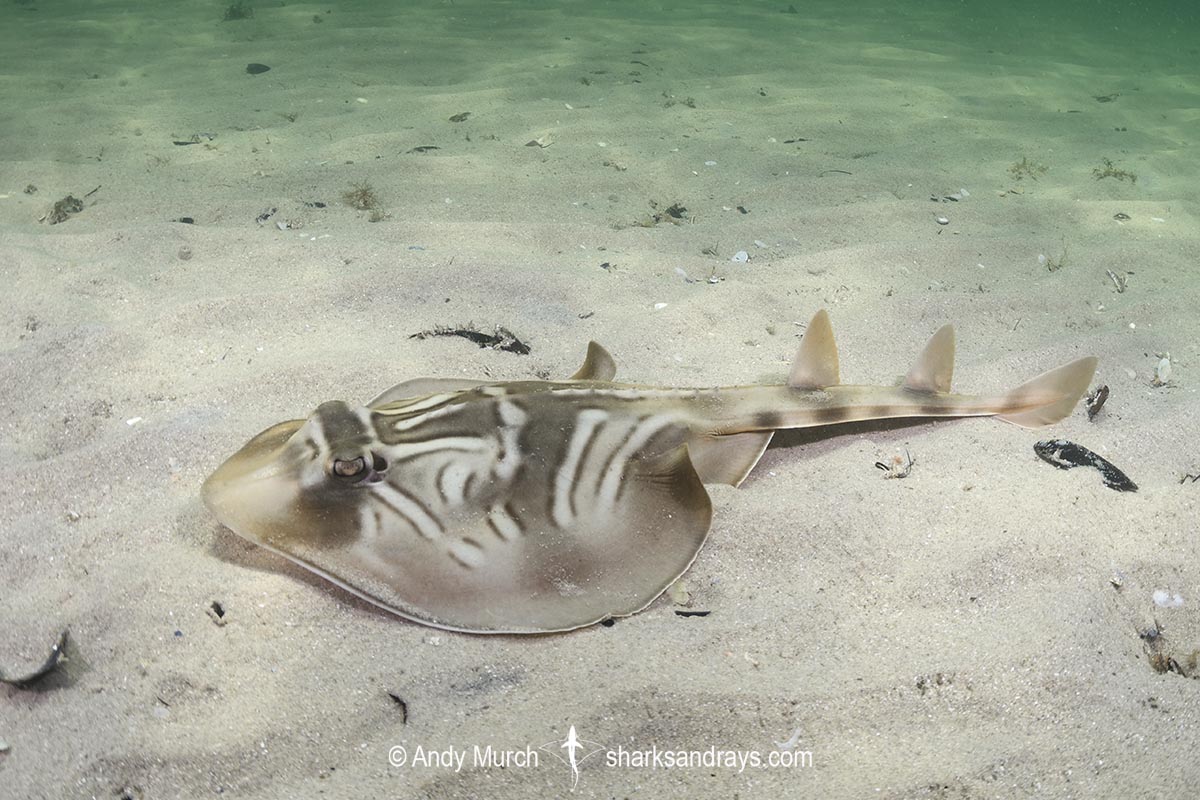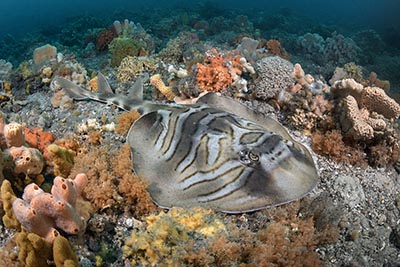Common names
Southern Fiddler Ray, Banjo Ray/Shark.
Binomial
Trygonorrhina dumerilii.
Synonyms
Rhinobatus dumerilii, Trygonorhina guaneria, Trygonorhina guanerius, Trygonorrhina fasciata guanerius, Trygonorrhina guaneria, Trygonorrhina guanerius, Trygonorrhina melaleuca.
Identification
A large shovelnose ray with a sub-oval disc. Snout short and obtusely angular with a bluntly rounded tip. Snout length 2.8-4.2 x orbit length. Eyes small. Spiracles with one large, fleshy skinfold on posterior margin. Nasal curtain almost completely covers aperture.
Anterior margins of disc convex. Pectoral apices angular to rounded, posterior margins broadly rounded. Dorsum completely covered in small denticles. 12-16 large thorn-like denticles along midline to first dorsal. Two short rows of thorns on each shoulder; outer rows slightly longer than inner rows. 1 or 2 pre and post orbital thorns.
Tail robust, 1.3-1.4 x disc length. Dorsal fins large and well separated, with narrowly rounded apices. Caudal fin triangular, without a defined lower caudal lobe.
Colour
Dorsum light greyish brown to yellowish-brown with large, diffuse, dusky or dark brown blotches and bars, and a variable pattern of roughly eye-width lines with dark brown edges. Post-orbital area usually with three longitudinal parallel lines. Rostral cartilage somewhat pale. Ventrum and lateral skin fold on tail pale.
A rare melanistic form exists that is black centrally sharply transitioning to white or beige near the disc margin. Once this was thought to be a separate species called a Magpie Fiddler Ray (Trygonorrhina melaleuca) but DNA testing on three preserved specimens confirmed that it is a colour variant of Trygonorrhina dumerilii.
Size
Maximum length 146cm.
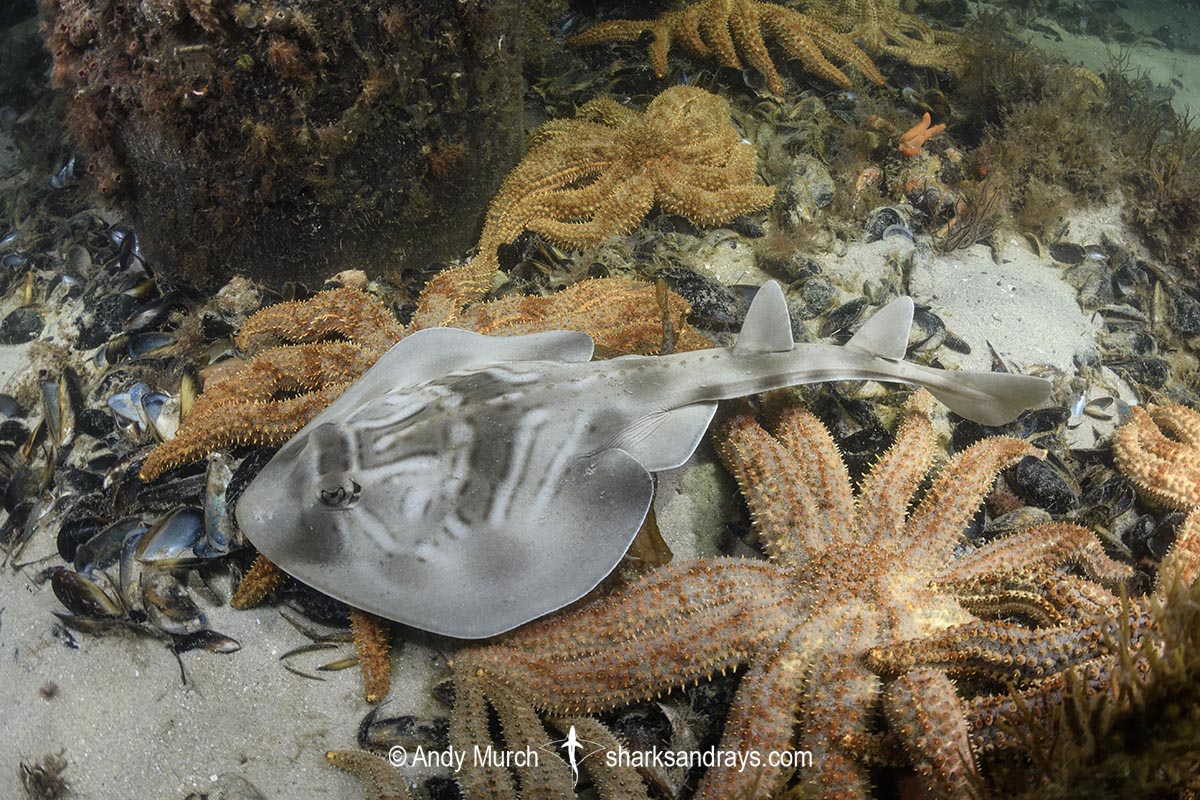
Conservation Status
LEAST CONCERN
Southern Fiddler Rays are caught in a variety of fisheries along the south coast of Australia including trawling, demersal gillnetting, and long-lining. However, they are rarely retained and post-release survival is believed to be high.
Fishing pressure in the region is fairly low and Trygonorrhina dumerilii is found in a wide range of habitats from inshore to 205m. Catch data suggests that there have been no significant declines.
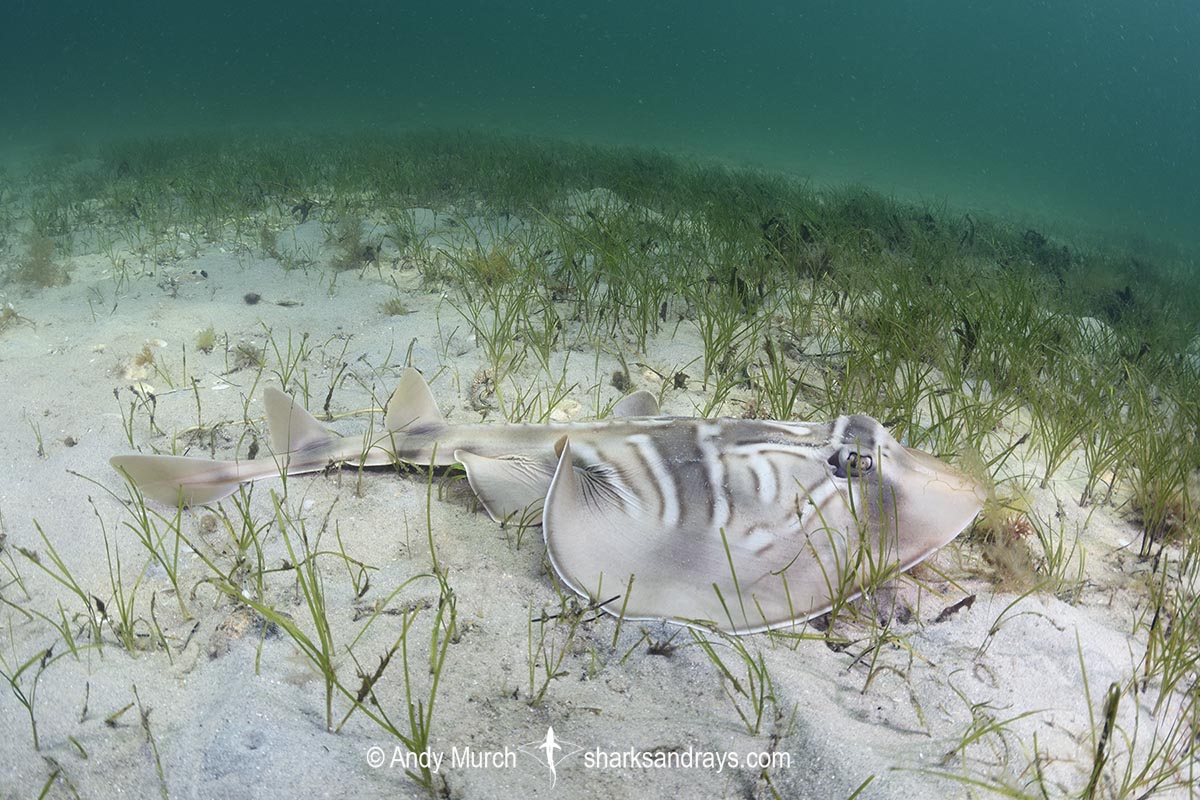
Habitat
Sub-tropical and temperate seas. Benthic on shallow sandy beaches and seagrass beds. From close inshore to 205m.
Distribution
Australian endemic. Southeastern Indian Ocean and Southern Ocean. From Lancelin in Western Australia to the eastern side of the Bass Strait in Victoria.
Reproduction
Aplacental yolksac viviparous. Litter size 2-5.
Diet
Feeds on crustaceans, worms, molluscs, and small bony fishes.
Behavior
Buries in the sand when at rest.
Reaction to divers
Easy to approach. Can be skittish but generally tolerant of divers unless molested.
Diving logistics
Southern Fiddler Rays are abundant in Port Phillip Bay south of Melbourne. It should be possible to see them around virtually all of the piers within the bay. While shore diving at Rye Pier in December, I encountered 19 on a single dive.
They can be encountered at numerous other shallow sites in Victoria. They are also becoming more common in Tasmania, especially on the north side of the island, although I also encountered one way down on the Tasman Peninsula.
I have also seen Southern Fiddler Rays in Western Australia at Rottnest Island near Perth, but not in great numbers.
What’s new
View our full list of updates
Similar species
Eastern Fiddler Ray Extremely similar but easily distinguished by three white lines that form a triangle behind the eyes, and greater amount of pre-dorsal midline thorns; ~18.

